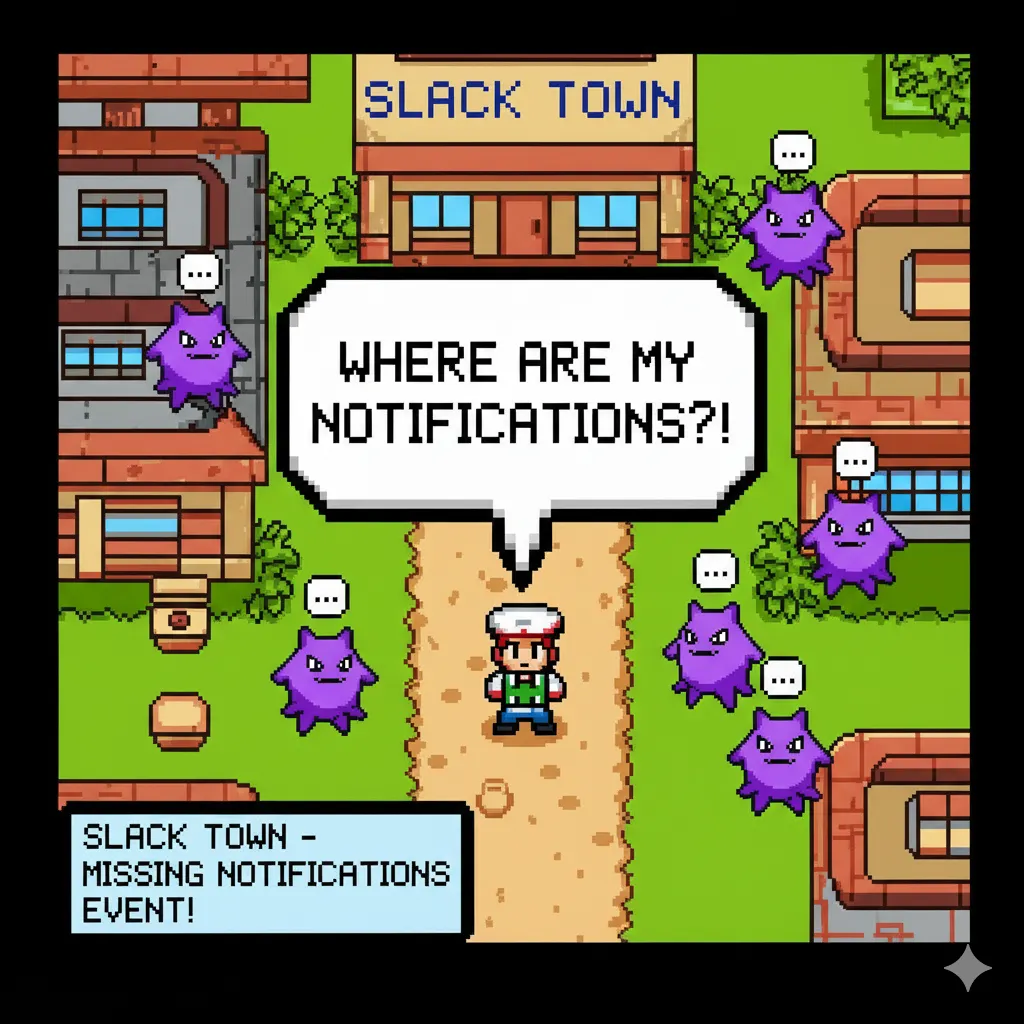The Slack Notification Paradox: Why Turning Everything Off Makes You Miss More
You muted 12 channels to focus. Great! Except you missed the client emergency, the server outage alert, and your direct report asking for urgent help.

The all-or-nothing trap
Teams face an impossible choice. Keep notifications on and get interrupted every three minutes by lunch debates and emoji reactions. Turn them off and miss the critical updates that actually need your attention.
Most productivity advice pushes the nuclear option: disable everything, check Slack on your schedule. Sounds logical until you're the one who missed the production incident because you were "focusing."
Why selective muting fails
Slack's notification controls seem sophisticated. Mute channels, customize keywords, set schedules. In practice, they're too crude for how teams actually work.
The problem: importance is contextual. The #random channel is noise 95% of the time. But when someone posts about a family emergency or shares a major life update, missing it damages relationships. A mention of your project in #general might be crucial, but wading through every #general message isn't sustainable.
Channel-level muting can't solve message-level importance.
The hidden cost of notification anxiety
When you can't trust your notification system, you develop checking compulsions. Every lull in deep work becomes a "quick Slack check" that turns into 15 minutes of scrolling.
The fear of missing something important creates the very interruption pattern you tried to avoid. You're not getting fewer interruptions — you're self-interrupting.
Research shows notification anxiety persists even when notifications are off. Your brain allocates background processing to "what might I be missing?" instead of "what am I working on?"
The intelligence gap
What teams actually need: notifications that understand context, urgency, and relevance. A system that knows when someone saying "this is urgent" in #random actually means urgent, versus when it's just emphasis.
Current tools treat all messages equally. A fire emoji gets the same notification weight as a fire in the server room. Your brain has to do the sorting, which defeats the purpose of turning notifications off in the first place.
A smarter approach
Instead of choosing between noise and silence, teams need intelligent filtering. AI that learns what actually matters to your role, your projects, your responsibilities.
When someone mentions your project in an unexpected channel, you get notified. When #general explodes with opinions about the new office coffee, you don't. When a client emails about an urgent issue and someone forwards it to Slack, it surfaces immediately.
The system handles the context switching so you don't have to.
What changes
Morning deep work happens without interruption. But when the client escalation happens at 10:47 AM, you know about it immediately — even though you're in focus mode.
Lunch conversation stays muted. Emergency discussions break through. You're present for what matters and absent for what doesn't.
Your brain stops running background anxiety about missing important updates. Focus becomes actual focus, not just performance theater.
Beyond notification management
The real issue isn't notification volume — it's notification intelligence. When systems can distinguish between urgent and chatty, important and ambient, personal and procedural, the binary choice disappears.
You don't need fewer notifications. You need better ones.
For teams ready to escape the all-or-nothing notification trap, Float AI provides intelligent filtering that learns what actually matters to your work — no manual setup required.